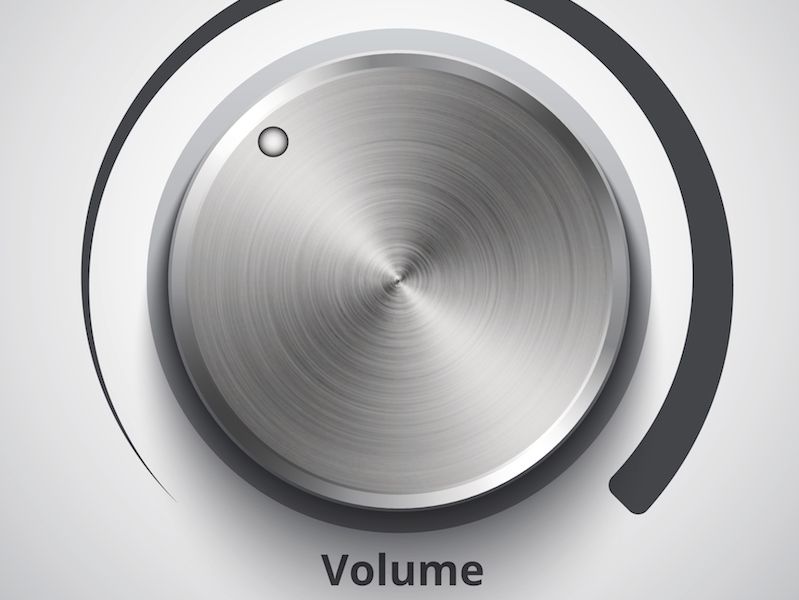
Have you ever seen the “Beware of Sharks” sign when you go to the ocean? It’s easy to realize that you should never ignore a caution like that. You may even reconsider swimming at all with a sign like that (if the sign is written in big red letters that’s particularly true). For some reason, though, it’s harder for people to heed warnings concerning their hearing in the same way.
Current research has found that millions of people disregard warning signs regarding their hearing (there’s no doubt that this is a global concern, though this research was specifically conducted in the United Kingdom). Part of the challenge is awareness. It’s pretty instinctive to be scared of sharks. But fear of loud noise? And the real question is, what’s too loud?
Loud And Dangerous Sound is All Around us
It isn’t just the rock concerts or the machine shop floors that present dangers to your hearing (although both of those venues are, indeed, dangerous to your hearing). There are potential hazards with many every-day sounds. That’s because the duration of sound is as dangerous as the volume. Your hearing can be injured with even low level noises like dense city traffic if you experience it for more than two hours at a time.
Generally, here’s an approximate outline of when loud becomes too loud:
- 30 dB: This is the sound level you would expect of everyday conversation. At this level, there won’t be any limit to how long you can confidently be exposed.
- 80 – 85 dB: This is the sound level of heavy traffic, a lawnmower, or an air conditioner. After around two hours this level of sound becomes dangerous.
- 90 – 95 dB: A motorcycle is a good illustration of this sound level. This amount of exposure gets dangerous in as little as 50 minutes of exposure.
- 100 dB: This is the amount of noise you might encounter at a mid-size sports event or an oncoming subway train (depending on the city, of course). 15 minutes of exposure will be enough to be harmful at this sound level.
- 110 dB: Have you ever cranked your Spotify music up to max volume? That’s usually around this sound level on most smartphones. 5 minutes will be enough to be harmful at this volume.
- 120 dB and over: Immediate pain and damage can happen at or above this volume (think about an arena sized sports event or rock concert).
What Does 85 Decibels Sound Like?
Generally speaking, you should consider anything 85 dB or above as putting your ears at risk. The problem is that it’s not always obvious just how loud 85 dB is. A shark is a tangible thing but sound isn’t so tangible.
And that’s one reason why hearing warnings commonly go neglected, when the sound environment isn’t loud enough to cause pain, this is specifically true. There are a couple of possible solutions to this:
- Get an app: Your ears can’t be immediately protected with an app. But there are a few sound level metering apps. It’s hard to assess what 85 dB feels like so your ears can be injured without you even realizing it. Using this app to keep track of noise levels, then, is the answer. This can help you develop a sense for when you’re entering the “danger zone” (and you will also discern immediately when things are getting too loud).
- Sufficient training and signage: This particularly pertains to the workplace. The real dangers of hearing loss can be reinforced by training and sufficient signage (and the advantages of protecting your hearing). In addition, just how loud your workplace is, can be made clear by signage. Training can tell employees when hearing protection is required or recommended.
If You’re in Doubt, Protect Yourself
No signage or app will ever be flawless. So make the effort to safeguard your ears if you are in doubt. Over a long enough period of time, noise damage will almost definitely create hearing issues. And nowadays, it’s never been easier to injure your ears (all you need to do is turn your earpods up a little too loud).
You shouldn’t increase the volume past half way, specifically if you’re listening all day. If you keep cranking it up to hear your music over background noise you need different headphones that can block out noise.
That’s the reason why it’s more significant than ever to recognize when the volume becomes too loud. And to do that, you need to increase your own awareness and knowledge level. It isn’t hard to minimize your exposure or at least wear ear protection. But you have to recognize when to do it.
Today that should also be easier. Especially now that you understand what to look for.
Schedule a hearing examination right away if you think you may have hearing loss.

